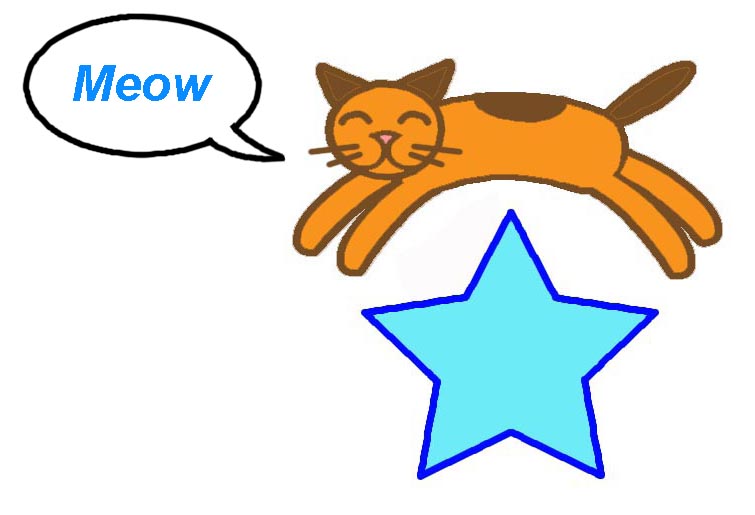
 | SOCO Blog |
09 July 2016
THE FALSE COMET
It's been over a month since my last Blog entry. This gap in reporting is the result of the cloudy conditions we've been having. June is the month of the "Summer Monsoon" in the American Southwest, which is a period of clouds and showers in this region. During this period, days typically start out clear. As the day progresses, clouds and thunderstorms begin to build along the mountains of New Mexico and Arizona. As the storm clouds build up into the upper atmosphere, the cirrus tops get caught in the prevailing westerly winds and get carried to the east. So, for us in the Texas High Plains, a veil of high clouds usually starts spreading across the sky from the west at around sundown. That pretty much takes care of any chances for imaging. The clouds usually dissipate early in the morning hours, but by that time most of the night has been lost for imaging. This same sequence of events can occur night after night. Very frustrating!
Luckily, I was able to get some imaging done at around the early part of July. This was critical, because I was able to image a number of objects in and around the tail of Scorpius. This part of Scorpius is never very high above the horizon (usually less than 15 degrees), so objects in this region can only be imaged about an hour or so each night. This is the best time of the year to capture these objects, so I was happy to be able to image a few of them.
In this Blog entry, I want to talk about a very interesting feature that can be observed this time of the year. This is an asterism called the "False Comet." It is an object around 2 degrees long comprised of several open clusters and other relatively bright stars in the tail of the scorpion (see Figure 1). The False Comet makes up that part of the scorpion's tail just south of the pair of stars μ1 and μ2 where it makes its abrupt turn to the east at the pair of stars ζ1 and ζ2. Compare this chart with the image in Figure 2. This is a 90-second image shot with my Nikon D300 SLR mounted in tandem with the SOCO telescopes. The area within this image is indicated by the blue box in Figure 1. This view might be something like what you could observe visually through binoculars. In this view, the False Comet appears as a clustering of stars sweeping upward from ζ1 and ζ2 Scorpii and bending slightly to the east. The name "False Comet" comes from this structure— under clear, dark sky conditions, this groupng of stars appears to the naked eye as a faint, fuzzy arc starting at ζ1 and ζ2 and fanning out as it curves upward, somewhat like the tail of a comet spreads out behind its bright head. Here, the "head" of the comet is the bright pair of stars ζ1 and ζ2.
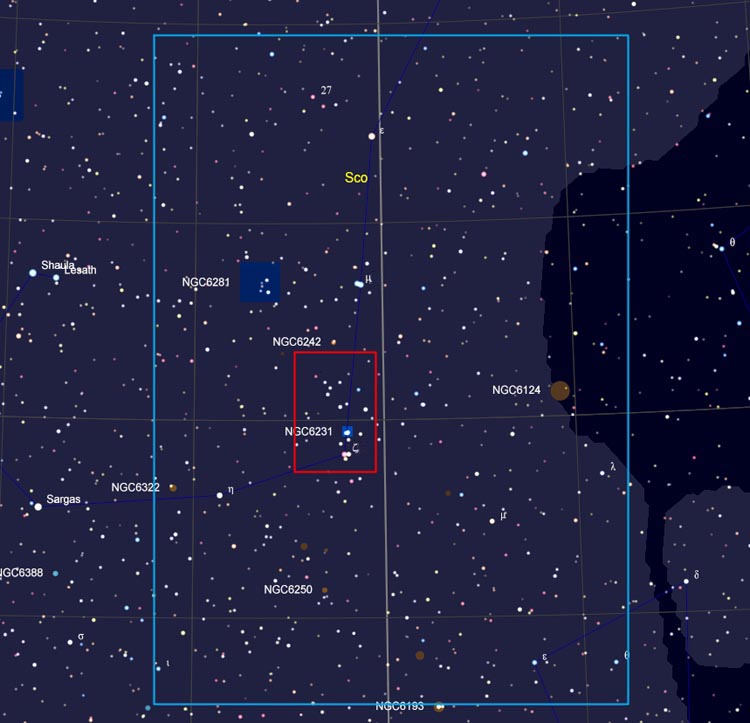
Figure 1. The tail of Scorpius containing the False Comet (red box).
Source: Adapted from Cartes du Ciel.
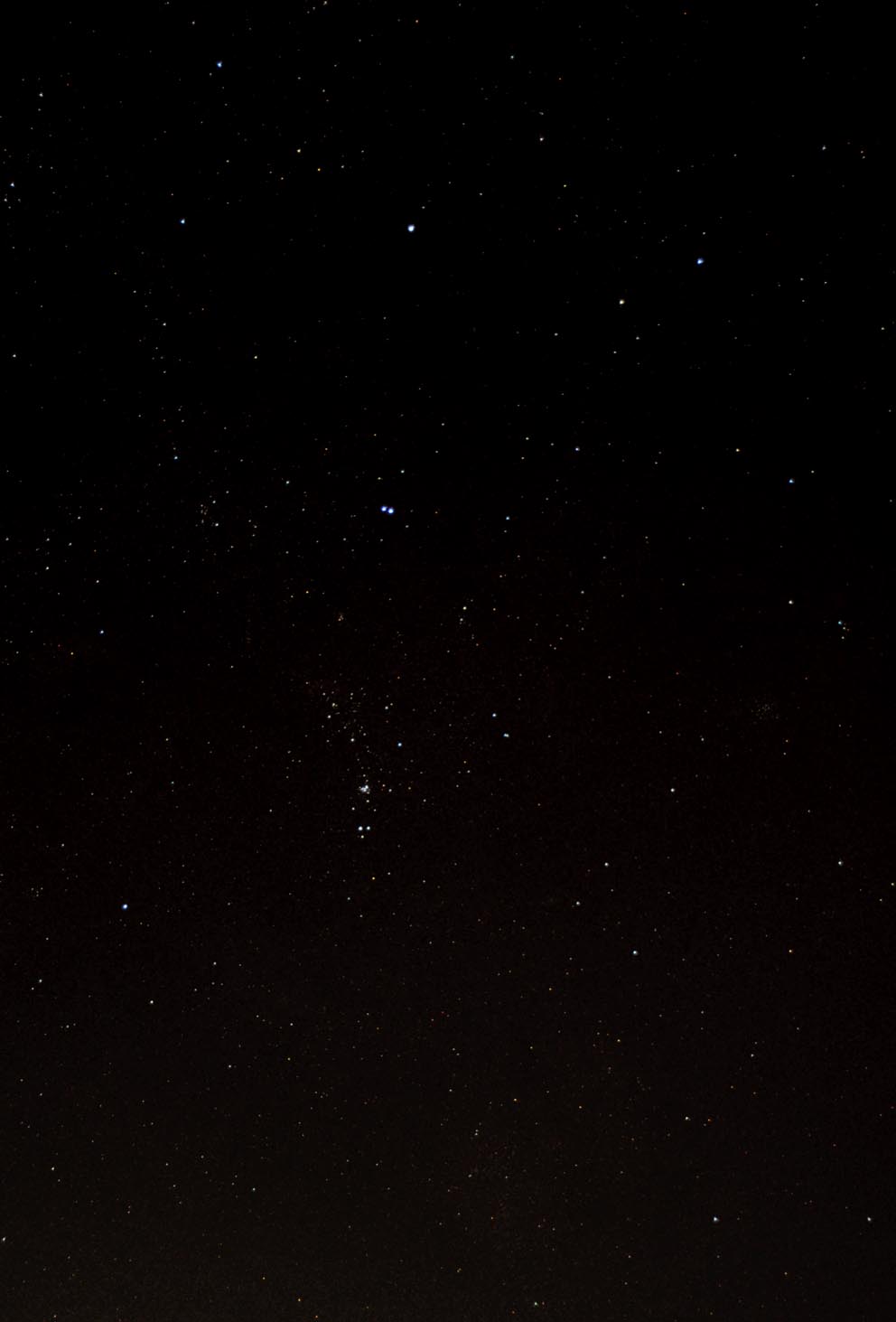
Figure 2. Image of the tail of Scorpius shot with a Nikon SLR. The "False Comet" is located at the center of the image.
Details of the False Comet can be seen in Figure 3. This is a mosaic of four images acquired in 2014 using the SOCO main telescope. Each of the four images was created from eight 2-minute exposures in each of the red, green and blue spectral bands. I reprocessed the original 2014 imagery using SuperSIAM to produce this view of the asterism. As seen in this image, the False Comet has a complex structure comprising several open clusters. These clusters are indicated in the chart in Figure 4.
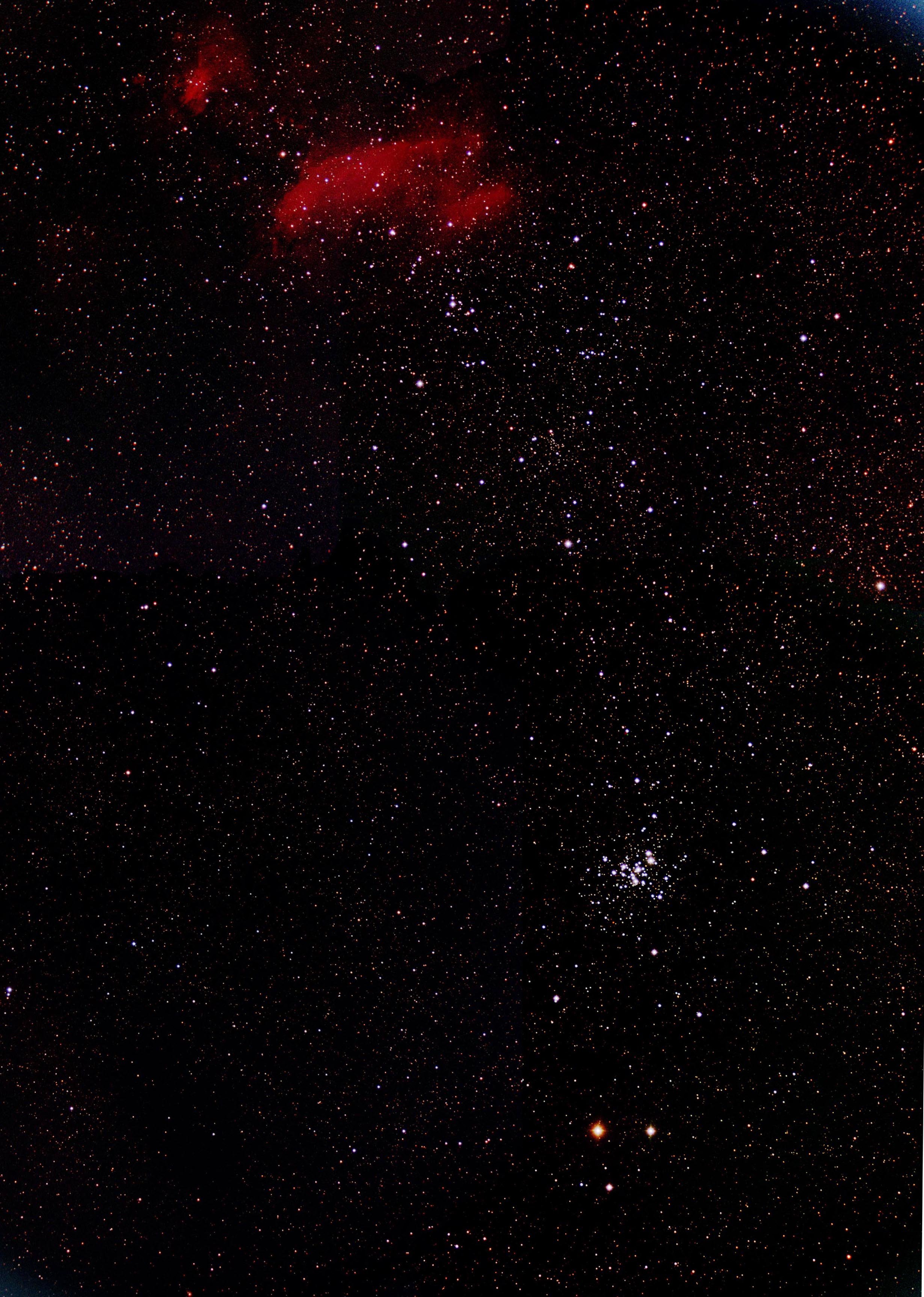
Figure 3. Mosaic of four SOCO images acquired in 2014 showing details of the "False Comet".
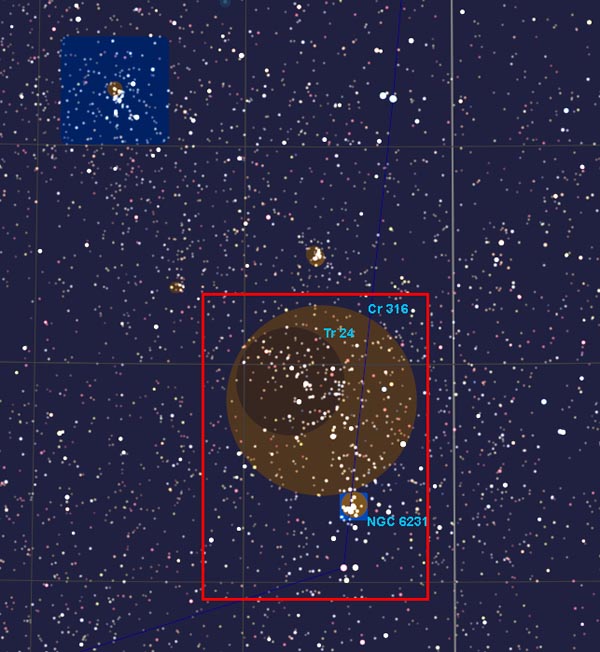
Figure 4. Detailed chart showing the clusters making up the "False Comet". The red box shows the area contained in Figure 3.
Source: Adapted from Cartes du Ciel.
What appears to be the bright "head" of the comet is the combination of the pair of bright stars ζ1 and ζ2 Scorpii and the compact open cluster NGC 6231. In Figure 3, ζ1 and ζ2 lie near the bottom edge, with the brighter ζ2 on the left. ζ2 is a red giant of spectral class K, and its ruddy color can easily be seen even in binoculars. The other star forming a triangle with ζ1 and ζ2 is HD 152293. The stars ζ1, ζ2 and HD 152293 have visual magnitudes of 4.70, 3.62 and 5.84 and lie at distances of 2510, 133 and 1418 LY, respectively. The differences in these distances indicate that this trio of stars are not physically related. Just above this trio, NGC 6231 has a visual magnitude of 2.6 and a visual diameter of 15 arc-min.
Once you get above NGC 6231, you encounter a scattered cloud of small stars making up the "tail" of the comet. As shown in Figure 4, this cloud of stars is the result of the superposition of two large open clusters, Collinder 316 and Trumpler 24. Many of the stars in this region are part of the Scorpius OBI Association, a group of relatively young stars created by the condensation of hydrogen gas some 5 million years ago. The process of star formation is continuing in the emission nebula IC 4628, which is associated with the cluster Trumpler 24 and appears in Figure 3 as the red clouds at the top of the "comet" (this nebula can't be seen with the naked eye but appears in my 2-minute exposures). NGC 6231 is thought to lie at the center of the Scorpius OBI Association. ζ1 Scorpii is also a part of this association. There are several other small clusters within the region of Collinder 316, including Ruprecht 122 and vdB-Ha205, but they make minor contributions to the overall form of the False Comet.
NGC 6231 is one of the most beautiful of the open clusters. The image of it (along with ζ1, ζ2 and HD 152293) shown in Figure 5 was acquired earlier this month. Unfortunately, it's low elevation (declination of -41.8 degrees) in North American skies makes it a difficult object for many to observe. The common name for this cluster is the "Northern Jewel Box", which alludes to another beautiful cluster, the better-known Jewel Box Cluster (NGC 4755) in the southern constellation Crux. NGC 6231 lies at a distance of around 5900 LY contains around 90 brighter member stars.

Figure 5. The Northern Jewel Box, NGC 6231.
My interest in this cluster goes back a long way. I first became really intersted in stars early in Junior High School. At night I would scan the skies (skies were a lot darker then, even in town) with my brother's 10×70 binoculars. At the time, my only guide to celestial objects was a copy of Herbert S. Zim's Golden Guide to Stars (first published in 1956, and still available in an updated version from St. Martin's Press). This tiny book contained the seasonal star charts by which I learned the constellations. It also had brief description of selected constellations, describing the brighter stars in them and, in some cases, other objects visible within their boundaries. And, as shown in Figure 6, the page describing Scorpius shows four "barely visible star clusters" (indicated by the small groups of three dots) located in that constellation. The book doesn't identify what these objects are, but it's fairly obvious that they are the open clusters M 6 and M 7 and the globular clusters M 4 and M 80. I was able to see three of these objects with the binoculars— I couldn't spot M 80, probably because it's much less conspicuous than the other three clusters. Still, in observing Scorpius with the binoculars, I saw other objects that looked of a similar nature, but didn't appear in the book. In particular, my attention was drawn to a tight knot of tiny stars in the lower part of the scorpion's tail. Was it also a cluster? It was fairly bright, but the book didn't indicate anything at that spot.
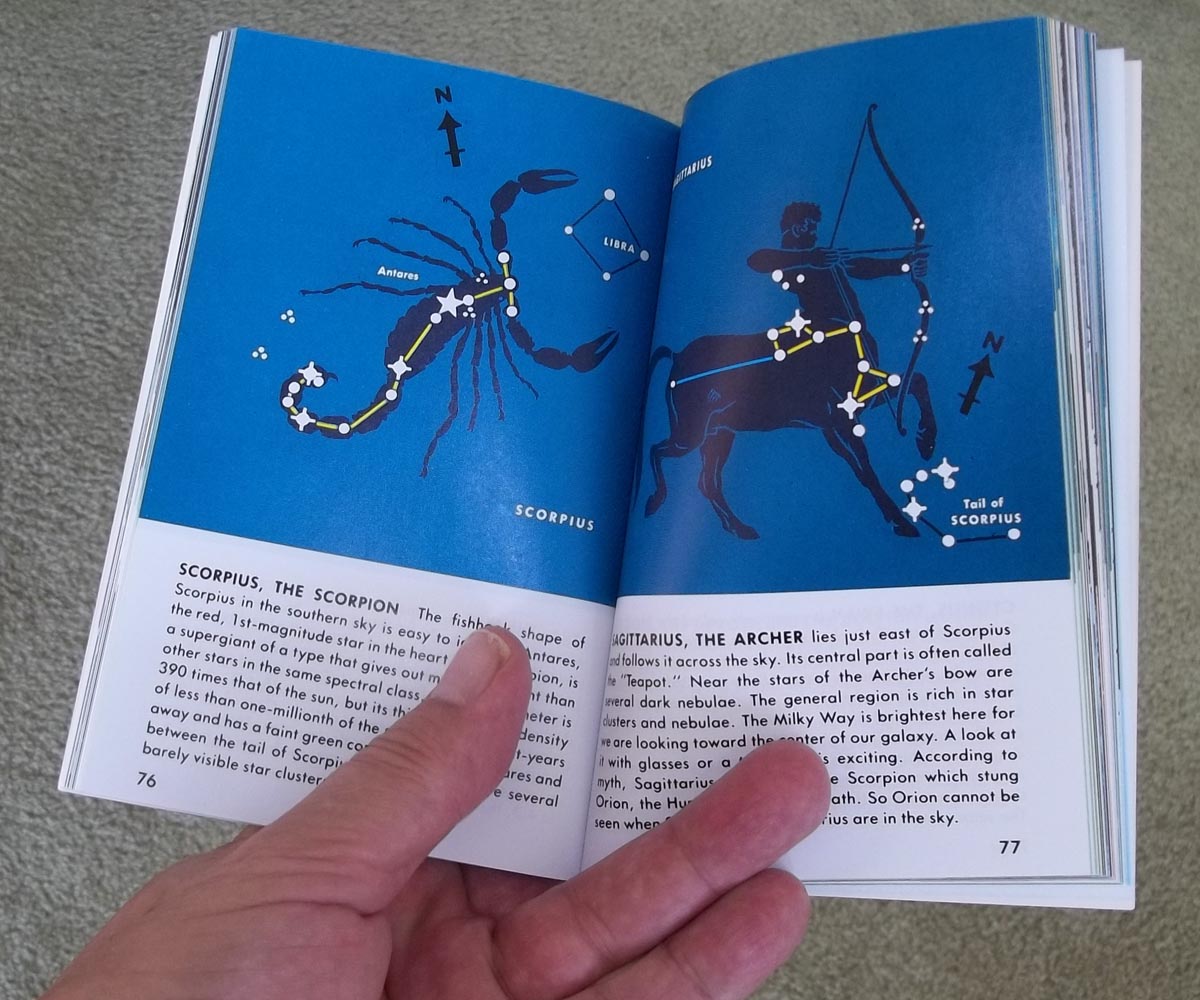
Figure 6. Photo of my copy of the Golden Guide to Stars showing the constellation Scorpius.
The mystery was resolved several years later when, for my birthday, my parents gave me a new astronomy book. This was a big book, with big star charts showing orders of magnitude more detail than the simple charts in the Golden Guide to Stars. And there, in the position of my observed group of stars, was the symbol indicating an open cluster with the label NGC 6231! So, in the footprints of Charles Messier, I had "independently" discovered this star cluster (at least for myself). This new astronomy book also showed, to my surprise at the time, that there were hundreds of star clusters and other deep-sky objects scattered across the constellations for me to observe. This really fueled my interest in observing deep-sky objects, an interest that has continued to today.
The other spectacular object in the False Comet is the emission nebula IC 4628. On the night of the Fourth of July, I captured red, green, blue, and Hα images of this object— the resulting true-color hybrid image is shown in Figure 7. It's common name of the "Shrimp" Nebula (or, for our Australian friends, the "Prawn" Nebula) comes from the shape of the middle part of the nebula which, in less-deeply exposed images, has the curved shape somewhat resembling this creature (see Figure 3). This is a big object around 1.5 degrees across with a visual magnitude of 7.31 (but fairly low surface brightness). It lies at a distance of around 6000 LY, confirming that it is part of the previously mentioned Scorpius OBI Association. The scattering of stars in the lower right quadrant of the image belongs to the cluster Trumpler 24. Deep observations by astronomers in the infra-red have revealed many more new stars that have formed within the depths of this nebula.

Figure 7. The Shrimp Nebula, IC 4628.
The Summer sky is full of marvelous objects to view. Here's hoping that the skies will clear so I can capture more of them!
 Return to SOCO Blog Page
Return to SOCO Blog Page
 Return to SOCO Main Page
Return to SOCO Main Page
Questions or comments? Email SOCO@cat-star.org